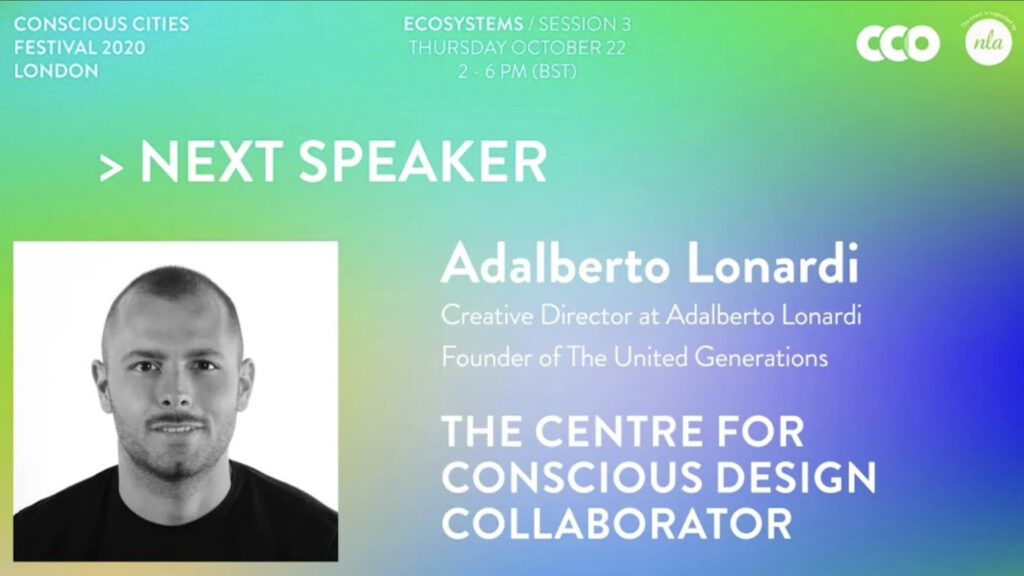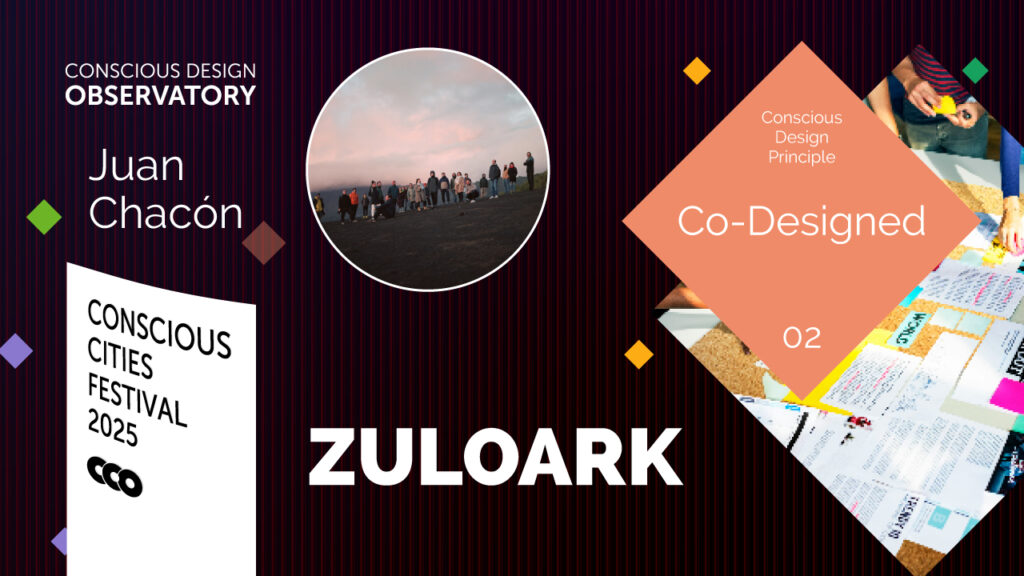The future doesn’t belong to the young and able-bodied. It is older, more urban and less mobile than you think. It is also, to put it bluntly, blinder.
The numbers of those living with sight loss in the UK are set to double to four million by 2050. This will create enormous challenges for those involved in creating the built environment. But it’s not a challenge we can or should avoid. Instead it is an enormous opportunity to future-proof your projects by putting inclusivity at the top of the agenda for the benefit of all. And profiting from a vastly under-serviced disabled community controlling £249 billion in spending power.
Guide Dogs is recognised globally as an expert in mobility and inclusivity. After all, for more than 80 years we’ve been working to ensure that people living with sight loss are not excluded from life. Though best known for our guide dogs, they are only a part of what we do. We bring the same expertise to our children and young people’s services and our My Guide sighted guiding service. Increasingly, we are also pioneering the design and deployment of smart tech to get people out and about.
As the UK’s leading sight loss charity specialising in mobility, particularly in relation to the built environment, we believe that everyone, regardless of their ability should be able to get out and about safely and confidently; be that to study, to work, to shop, to look after grandchildren, to maintain their health and fitness and so on. In short, we feel that no one should be left out of life.
This article aims to educate and challenge current thought leadership and emerging policies concerning the development of our Smart Cities, and the design and deployment of digital technologies and their impact on citizen wellbeing. We want to ensure that future Infrastructure and Smart City solutions serve the needs of all sectors of society; including people living with sensory loss, older people, people with physical disability, and people with learning disabilities. These sectors of society are so often forgotten and have struggled for years in a world defined by a legacy of Victorian infrastructure; as we move to the next great era of technology innovation, our policies and standards for city design and infrastructure investment need to proactively champion inclusivity for everyone.
The UK is leading the way on the development of Smart Cities; where advances in digital technologies and open-data are finding new ways to augment and improve the world we live in. But our Smart Cities should not just be about the deployment of innovative technologies to increase efficiency or economic growth; the degree to which our cities are smart also affects citizen wellbeing and the way we interact with our environments and communities in everyday life. Indeed, in 2013 the Department for Business Innovation and Skills noted that “A Smart City should enable every citizen to engage with all the services on offer, public as well as private, in a way best suited to his or her needs.1
The UK is a signatory to the United Nations Convention on the Rights of Persons with Disabilities. This places obligations on the government, including article nine which requires State Parties to (amongst other things): “take steps to ensure that disabled people are able to access the physical environment which embraces buildings, roads, transportation and other indoor and outdoor facilities.2
Undoubtedly, we are currently witnessing a convergence between technology innovation and policy thinking; in 2017 the UK government published its long awaited UK Digital Strategy3 and a green paper setting out its plans for the UK Industrial Strategy4, and the City Standards Institute has recently published new standards for smart city development5. Whilst these documents are addressing some of the big issues and mega-trends facing society, they have not yet adequately covered the need to accommodate the needs of nearly 12 million people living with disabilities in the UK.
In 2014 The Office for Disability Issues noted “There are over 11 million people with a limiting long term illness, impairment or disability. The prevalence of disability rises with age. Around 6% of children are disabled, 16% of working age adults and 45% of adults over State Pension age.” With so many people affected, inclusion for all sectors of society surely has to be an important metric to attain ‘Smart City’ status, and hence surely has to be better embedded within the thought leadership behind our infrastructure policies and investment decisions.
Despite the current national focus on defining strategies and guidance for the next era of city and infrastructure investment, sadly, many people with sight loss, people with other disabilities and older people are still unable to participate fully in community life due to public ignorance, poor design and bad service delivery. Guide Dogs is seeking support for a more collaborative approach to the co-creation of inclusive environments; where the interaction between people and their physical or virtual environments allows them to get around safely and confidently, with minimum fuss and maximum independence.
Today, many everyday services and environments tend to operate in a default mode and an accessibility mode. Unless there is significant pressure during the design phase of a new system or environment, far more attention is given to the default mode, and the accessibility mode is often not a primary concern. This tends to result in sub-optimal experiences for older people and people living with a disability, and sometimes it can mean total exclusion.
“Social exclusion is a complex and multi-dimensional process. It involves the lack or denial of resources, rights, goods and services, and the inability to participate in the normal relationships and activities available to the majority of people in a society, whether in economic, social, cultural or political arenas. It affects both the quality of life of individuals and the equity and cohesion of society as a whole.”6
Inclusive environments combine the design of the built environment and transport, retail and entertainment services with new digital technologies to deliver consistent and joined-up customer experiences that often transcend any single service provider’s remit. Collaboration and interoperability of this nature will require central support and facilitation to seed a new approach to designing and delivering positive joined-up services and customer experiences, powered and enabled by appropriate infrastructures and technologies.
In a climate of increasing devolution, city administrations require clear guidance and support to ensure that their Smart Cities are actively focussed on delivering inclusive environments and communities for disabled people. In short, ‘Inclusion’ must be given equal prominence and investment amongst other smart city themes (e.g. energy, transport, environment, etc.).
Official disability facts and figures published on the government website in 2014 noted “A substantially higher proportion of individuals who live in families with disabled members live in poverty, compared to individuals who live in families where no one is disabled.” This impacts millions of people, and whilst many people with disabilities are living on the poverty line, the combined spending power of disabled households is still significant: “In 2014/15 disabled people and their families in the UK had an aggregate annual household income of £249 billion, up from £212 billion in 2012/13.7 So, there is both a social obligation and an economic incentive to encourage innovators and service providers to embrace social inclusion.
When considering the UK’s future infrastructure investments consideration should also be given to achieving the right balance in the solutions-mix (hi-tech, lo-tech and person to person services) and demonstrate how ‘digitally excluded’ members of society can easily, confidently and safely participate in society. Similarly, initiatives need to demonstrate how solutions are equally applicable to residents in rural communities as they are to those living in cities.
The aforementioned UK Digital Strategy clearly notes the growth of digital solutions in all aspects of life and the economy, and it references the need to close the digital divide – this is a problem that has been known for many years, yet still significant numbers of disabled and older people are unable to use digital solutions because the technology and operating policies are often poorly designed, inaccessible, expensive and there is a lack of awareness and training support. This is particularly the case for people with sight loss.
Digital solutions have great potential to assist many disabled and elderly people in everyday life, but our future infrastructure assessments also need to address the many issues associated with poor town planning, street design, building architecture and public services.
The decisions and policies that we make today will affect the world that we all grow old in tomorrow, so our infrastructure policies, smart city standards, public contracting processes and economic models should proactively champion inclusivity for everyone, so that city administrations and solutions providers are actively challenging themselves at every step to ask and answer questions such as “can this solution be used by, and be of benefit to, older people and people who are disabled?”
In particular, designers and policy makers often tend to think of disability purely in terms of step-free access for wheelchair users – they rarely test their project solutions from the perspective of people living with sight loss, hearing loss, or cognitive difficulties. In the modern age this is no longer acceptable.
Looking forward, autonomous vehicles, smart street furniture and more considerate architecture and street designs all have great potential to help people who are disabled to lead integrated and independent lives. Infrastructure that improves connectivity and supports the use of artificial intelligence and machine learning can also be used to support mobility in both outdoor and indoor environments. However, if we do not actively focus attention now on ‘inclusivity’ at all stages of the strategy, design and implementation processes, then the UK will fail in its drive to create smart cities – as cities that continue to exclude millions of citizens cannot be considered smart!
Infrastructure that supports virtual and physical connectivity will promote independence and greatly enable disabled people to fully participate in higher education, employment and to become positive contributors to the economy. For example, research conducted in 2015 with 1,200 respondents identified that over 70% of registered blind and partially sighted people of working age are unemployed8. A shocking statistic compared to the 5% unemployment figure for the general population.
Inclusive transport infrastructure can promote smooth, safe and independent travel, giving disabled people the same ability to simply ‘turn up and go’ without the need to book assistance in advance. This will save time and stress for the traveller and the service provider. It is well documented in design literature that adopting a ‘universal design’ approach benefits everyone – designing for the UK’s most challenged users delivers results that benefit and delight all users, regardless of their abilities or disabilities.
We are on the cusp of multiple technologies converging at a time when government support and guidance is most needed to ensure that marginalised communities are finally brought into the mainstream in terms of education, employment, health, social wellbeing and net contribution to the economy. There are many research projects underway in the UK and abroad investigating how advances in technology can assist disabled people, but these projects require access to real-world infrastructure to break out of the research environment to become scalable solutions.
Strong proactive steps are needed now to design-in inclusivity on all new infrastructure projects – be they schemes to replace old street lights with intelligent lampposts, or the roll-out of autonomous vehicles from 2020 onwards. In particular, thought leadership is required to ensure that there are no negative impacts of changes made to our infrastructure – for example will the introduction of autonomous vehicles lead to changes in street design that will have negative consequences for disabled pedestrians? We have already seen controlled level crossings being removed from ‘shared surface’ street schemes which has created no-go zones for some disabled users – a problem that could have been avoided if these schemes adopted the following 6 design principles for inclusive design:
Principle 1: Co-production and assessing the impact of change – working together for the benefit of everyone
Principle 2: Complying with standards but striving for excellence – the importance of continuous improvement
Principle 3: Joined-up travel, retail and entertainment experiences – facilitating smooth and stress-free participation in community life
Principle 4: Seamless processes and operating Systems – interoperability and making the most of technology
Principle 5: Using clear language and information – creating an environment that everyone understands
Principle 6: Design that influences public and staff behaviour – using our intuition
We are not alone in recognising the importance of taking an inclusive approach to design. The architecture and design community also appreciates the need to get things right. Yes, so that high streets can look nice and welcoming in order to increase footfall for retail outlets and boost local economies, but inclusive design also impacts on health and wellbeing and community cohesion.
The Commission for the Architecture in the Built Environment (CABE) summed it up nicely: “Inclusive design is about making places that everyone can use. The quality of buildings and spaces has a strong influence on the quality of people’s lives. Decisions about the design, planning and management of places can enhance or restrict a sense of belonging. They can increase or reduce feelings of security, mobility, and improve or damage health. They can remove real and imagined barriers between communities and foster understanding and generosity of spirit.”
So, what does a future smart city experience look like for a blind or partially sighted person? We have prepared the following simple use cases to get you thinking – the possibilities are endless, if we all work together!
Smart Home: You’re running late for a friend. Pulling on your coat, you tell the house to have the chops in the oven cooked by 7pm, to switch the heating on at 6pm and play some burglar-deterring radio all day.
Smart Streets: You walk into town passing smart lampposts. Their free Wi-Fi and Bluetooth complements your satnav telling you exactly where you are and warning you that you’re approaching a shared surface.
Autonomous Taxi: Rain is imminent, so you ask your phone to call an autonomous taxi. They know your needs, billing is fully automated, and the accessible vehicle is easy to locate and use.
Smart Retail: It’s your friend’s birthday and you need to pick up a gift. Quickly matching your budget with her tastes, your smart aisle finder easily guides you to suitable products in the store.
Entertainment: Your tech helps find your friend in a crowded gallery. The customer experience doesn’t just navigate you through the accessible building – the highly amusing commentary empowers you to discover and select exhibits, too.
Public Transport: Heading home, your tech locates a bus stop over the road and says your bus is just 90 seconds away. You board, aided by a driver who’s received compulsory disability training – and arrive to a warm home in time to enjoy your chops.
References
- Department for Business Innovation and Skills. Smart Cities Background Paper. (2013)
- United Nations Convention on the Rights of Persons with Disabilities. (2006)
- Department for Culture, Media and Sport. Policy Paper, UK Digital Strategy. (2017)
- Department for Business, Energy and Industrial Strategy. Green Paper, Building our Industrial Strategy. (2017)
- British Standards Institute. PAS 183 Smart cities – Guide to establishing a decision-making framework for sharing data and information services. PAS 184 Smart Cities – Guide to developing project proposals for delivering smart city solutions. (2017)
- Levitas et al. The Multi-Dimensional Analysis of Social Exclusion. (2007)
- Department for Work and Pensions. The spending power of disabled people and their families. (2016)
- John Slade and Rose Edwards. My Voice 2015: The views and experiences of blind and partially sighted people in the UK. RNIB. (2015)










